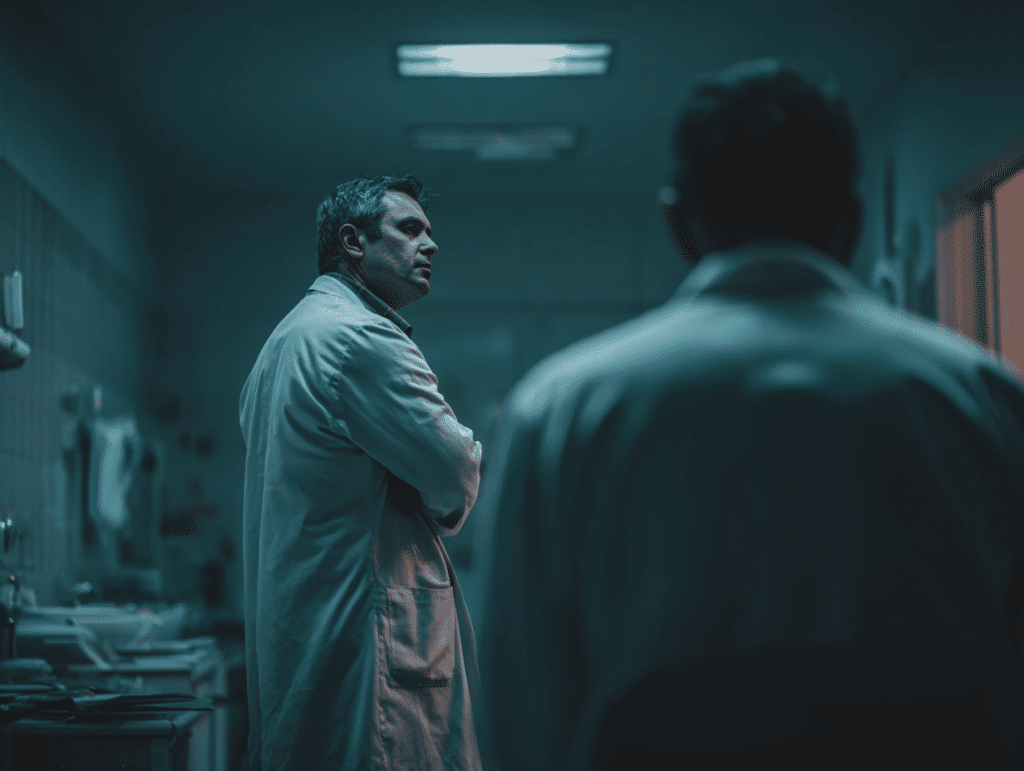Key Takeaways
- Bicycle accident law encompasses traffic laws, negligence, and liability, requiring mutual adherence to road safety rules by cyclists and motorists, and determining fault through evidence of negligence.
- Bicycle accident attorneys play a vital role in investigating the accident, negotiating with insurance companies, and litigating claims to ensure victims are appropriately compensated for their damages.
- In Texas, victims have a two-year statute of limitations to file a personal injury claim for a bicycle accident, with certain exceptions potentially pausing or extending this period. However, if a government actor caused the crash, there may be notice obligations that require the injured person to give formal notice of the claim within a shorter period, sometimes as short as 90 days.
Let's Go Beyond, to Bring You Back
Let's get you the compensation you're entitled to. Get a FREE Consultation today.
Let's Go Beyond, to Bring You Back
You deserve the compensation you’re entitled to, call for your FREE Case Review today.
Understanding Bicycle Accident Law: Key Principles
Bicycle accident law is a specialized area that focuses on the legal rights and duties of cyclists and those potentially responsible for bicycle accidents. Bicycle accident law is a subpart of general personal injury law, which deals with who should be responsible for injuries that might be caused by others. In essence, it exists to ensure justice is served and the person who caused the harm is responsible for paying for it. The fundamental principles of bicycle accident law revolve around traffic laws, negligence, and liability.
Both cyclists and motorists are subject to traffic laws, and their mutual adherence to these rules is paramount for safety and legal compliance on the roads. Negligence, or the failure to exercise reasonable care, is a crucial determinant of who is liable in an accident. The liable party is typically the one who has breached a duty of care and this breach can be proven through evidence of negligence.
Let’s delve deeper into these principles.
Traffic Laws for Cyclists and Motorists
Just like motorists, cyclists are also expected to follow traffic laws. It is important for all road users to adhere to these regulations for safety and order. This includes:
- Driving on the right-hand side of the road
- Yielding to crossing traffic at intersections
- Respecting traffic already occupying a lane when changing lanes
- Slower moving vehicles, including bicycles, should position themselves on the right side of the road
- In narrow lanes, cyclists may occupy the full lane
- In wider lanes, staying three feet to the right of traffic is advisable
Furthermore, cyclists must also obey all street signs, signals, and road markings. In Texas, the bicycle laws stipulate that cyclists signal their intentions to stop or make turns through designated hand signals. In terms of equipment, bicycles must have a brake capable of causing the bike to skid on dry, level pavement, and appropriate lights and reflectors if ridden at night.
Local ordinances, like Houston’s Safe Passing Ordinance, mandate vehicles to maintain a minimum passing distance when overtaking cyclists. These specific regulations protect cyclists and promote harmony on the road.
Negligence in Bicycle Accidents

In some cases, the injured cyclist may also be at fault to some degree, leading to the application of the principle of contributory or comparative negligence (called proportionate responsibility in Texas). Under Texas’s version of comparative negligence, a cyclist’s compensation may be reduced in proportion to their degree of negligence, and if the cyclist’s negligence is more than 50% responsible for the crash, the cyclist’s fault will bar all recovery.
In most states, it is interesting to note that not wearing a helmet while cycling is not necessarily considered contributory negligence. This means that a cyclist’s decision to not wear a helmet may not automatically be seen as a factor in any accidents or injuries. But in Texas, proof that the injuries would be less severe if a helmet had been worn may make the nonuse of the helmet admissible against the cyclist. It is, therefore, crucial to engage a knowledgeable bicycle accident lawyer to explore and ascertain these aspects of a potential injury case.
Establishing Liability in Bicycle Accident Cases
“Liability” in bicycle accident cases means who, if anyone, negligently caused the crash. Determining who is at fault decides who is entitled to compensation. Liability hinges on aspects like negligence and shared responsibility for the accident. Often, motorists are found at fault if they fail to yield to cyclists or make sudden stops without reason.
In Texas, an at-fault motorist is liable for the cyclist’s damages if the motorist was negligent in causing the crash. The motorists liability insurance is then responsible for paying for the cyclist’s losses and harms, up to the limits of the policy. Hence, establishing liability is not only a legal necessity for compensation, but also a route to justice for injured cyclists.
Houston Bicycle Accident Attorney
Get Compensated For Your Injuries & Damages! Call Us For A FREE Case Review And Know What Your Case Is Worth.
The Role of a Bicycle Accident Attorney in Pursuing Compensation
In the aftermath of a bicycle accident, victims often find themselves grappling with physical injuries, mental trauma, and financial burdens. Amidst such distress, bicycle accident attorneys emerge as their beacon of hope. They represent injured cyclists in dealing with hostile insurance companies and in any necessary court proceedings. Besides assisting victims in filing compensation cases, these lawyers offer advice on legal action and safeguard clients from threats to their financial recovery.
Let’s delve into the specifics of their role.
Investigating the Accident
One of the key responsibilities of a bicycle accident attorney is to conduct comprehensive investigations. They:
- Revisit the accident scene
- Take photographs
- Locate video of the crash and aftermath, if available
- Interview witnesses
- Collect medical records and crash reports
- Examine all related damages
These steps are taken to establish fault and build a strong case.
Prompt involvement of a lawyer after a bicycle accident is crucial. It can help to:
- Preserve evidence
- Construct a winning legal strategy
- Initiate negotiations with insurance companies
- Work with the police to verify facts
- Guide clients through medical treatment and bills
- File suit and go to trial if necessary
This process is important to ensure that you receive the compensation you deserve after a bicycle accident.
Negotiating with Insurance Companies
Insurance companies can be formidable adversaries. They may employ various tactics to deny or underpay claims, such as offering lowball settlements, delaying processing, or misrepresenting policy details. The initial settlement offer from an insurance company may not cover the full extent of a victim’s losses, leading to further negotiations or legal action.
To protect clients from these tactics, bicycle accident lawyers handle all communications with insurance companies, ensuring their rights are upheld. Having legal representation during these negotiations is beneficial, as lawyers can navigate insurance tactics and advocate effectively for the victim.
Litigating Bicycle Accident Claims
When settlement negotiations do not result in a fair offer, bicycle accident attorneys are prepared to take the case to court. They handle both the collection of evidence and the direction of legal proceedings, leading settlement negotiations.
In Texas, a lawsuit must be filed within the two-year statute of limitations to maintain the option for court action if insurance settlement negotiations are not concluded. This legal timeframe is crucial and further underscores the need for a proficient attorney.
Types of Damages Recoverable in Bicycle Accident Cases
In the pursuit of justice, victims of bicycle accidents should be fully compensated for all the losses they incur. This compensation addresses both financial burdens and subjective harms, and it covers economic and non-economic damages. The specific amounts are typically assessed based on the severity of the injury, necessary medical treatment, and the extent of the damages suffered.
Let’s delve deeper into these types of damages.
Economic Damages
Economic damages aim to reimburse victims for the out-of-pocket costs incurred after a bicycle accident. These costs can include:
- Lost income
- Medical expenses
- Prescription medications
- Physical therapy
- Rehabilitation
- Surgery
- Property damage
- Household services
When calculating compensation, future damages are considered as well. For example, the concept of lost future earning capacity deals with loss of the ability to earn income into the future. Factors such as the victim’s occupation, skills, experience, and life expectancy are taken into account.
Serious injuries, like traumatic brain or spinal cord injuries, can permanently affect an individual’s ability to work, require expensive ongoing medical treatment, and force the injured person to seek assistance in handling normal household tasks like laundry or food preparation.
Non-Economic Damages
While economic damages cover tangible losses, non-economic damages compensate for the intangible and subjective effects of a bicycle accident, like emotional trauma and diminished quality of life. These damages encompass subjective losses without predetermined monetary values, such as:
- Mental anguish
- Impairment or disability
- Physical pain
- Disfigurement
- Loss of enjoyment of life
Determining compensation for pain and suffering is highly subjective, as it depends on the individual’s experience of pain and impairment. Victims may also receive compensation for the loss of enjoyment of life if they are no longer able to participate in activities or have fulfilling life experiences due to their injuries.
Factors Affecting Compensation Amounts

Compensation for lost wages can be recovered if the injuries from the accident prevent the victim from working. Typically a doctor proves that the injured person was unable to work due to the injury. Economic compensation may also include damages for loss of future earning potential for victims facing long-term disabilities that impede their work capacity.
Legal Timeframes and Statutes of Limitations
In the legal world, time is of the essence. The statute of limitations, or the timeframe within which a lawsuit must be filed, is a crucial aspect of personal injury claims. In Texas, this period is two years for personal injury claims. Let’s delve into the specifics of this legal timeframe and its exceptions.
Filing a Personal Injury Claim
Filing a personal injury claim allows bicycle accident victims in Texas to document the incident, present their account of events, and avoid missing important deadlines for seeking compensation. A personal injury lawsuit must be filed within two years from the date of the bicycle accident to comply with the statute of limitations.
Consulting a personal injury lawyer can be a critical first step in filing personal injury cases. They offer a free case evaluation and test the merits of the claim. This early engagement with legal professionals ensures that evidence is preserved and a strong legal strategy is developed, following the principles of personal injury law.
Exceptions to the Statute of Limitations
While the statute of limitations generally dictates the timeframe for filing a lawsuit, there are exceptions. For instance, if a bicycle accident victim is a minor or mentally incapacitated, the statute of limitations is paused until the victim turns 18 or becomes mentally competent.
Other, rarer situations can suspend the statute of limitations (what lawyers call “tolling”). The statute of limitations may be extended for those who were initially unaware of their injury or the fault of the other party at the time of the accident. Or where the at fault person conceals their identity from the injured person. These exceptions ensure that victims have a fair opportunity to seek justice.
Houston Bicycle Accident Attorney
Get Compensated For Your Injuries & Damages! Call Us For A FREE Case Review And Know What Your Case Is Worth.
Protecting Your Rights as a Cyclist in Texas
In Texas, cyclists are not merely tolerated nuisances on the road; they are rightful road users with the same legal rights and protections as motorists, including the right to use the road and to pursue legal actions against any negligent parties after an accident.
Let’s explore how cyclists can protect these rights.
Knowing Your Rights
Cyclists in Texas have the right to occupy a full lane in situations such as passing or navigating unsafe road conditions. This right affirms their equal status on the road.
Moreover, cyclists who are injured due to the negligence of a motorist have the right to seek compensation. This compensation may include:
- Medical costs
- Lost earnings
- Replacement services
- Pain and suffering
It’s empowering to know that the law is on your side.
Steps to Take After a Bicycle Accident
After a bicycle accident, certain steps can help protect your rights and build a strong case for your bicycle accident claim. Firstly, seeking medical attention for any injuries is a crucial step to ensure proper documentation and evaluation of those injuries. Reporting the crash to the insurance companies is important, but remember that the at-fault’s insurer is interested in paying as little as possible, not helping the injured person get back to full health.
Engaging a bicycle accident attorney early is advisable to ensure evidence is preserved and to develop a strong legal strategy. To avoid legal pitfalls, bicycle accident attorneys draft communication on behalf of clients, ensuring nothing jeopardizes the case.
These steps can make a significant difference in the pursuit of justice.
Frequently Asked Questions
What are the traffic laws that cyclists must follow in Texas?
Cyclists in Texas must follow the same traffic laws as motorists, including driving on the right-hand side of the road, yielding to crossing traffic at intersections and obeying all street signs, signals, and road markings.
What is negligence in bicycle accidents?
Negligence in bicycle accidents typically encompasses driver inattention, failure to yield, and rear-end collisions, and is a critical factor in determining liability. But negligence can be anything a driver or cyclist does that is unsafe or unreasonable.
How does a bicycle accident attorney help in pursuing compensation?
A bicycle accident attorney helps pursue compensation by conducting thorough investigations, negotiating with insurance companies, and litigating claims to secure fair compensation for the injured cyclist. This is essential for ensuring the best possible outcome for the injured party.
What types of damages can be recovered in bicycle accident cases?
In bicycle accident cases, you can recover compensation for economic damages such as medical bills and lost income, as well as non-economic damages like pain and suffering.
What is the statute of limitations for personal injury claims in Texas?
The statute of limitations for personal injury claims in Texas is two years, with exceptions for certain circumstances such as cases involving minors, mentally incapacitated individuals, or initially unknown injury or fault.


